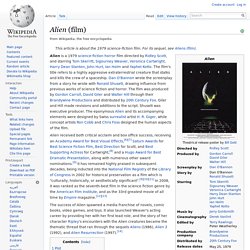

Voyage to the Planet of Prehistoric Women. Stranded: Náufragos. Stranded is a 2001 film about a fictional first manned mission to Mars.

It stars Vincent Gallo and Maria de Medeiros, and was directed by Spanish filmmaker and actress María Lidón (credited in the English version of the movie as "Luna"), with screenplay by Spanish science fiction author Juan Miguel Aguilera. Lidón won the "Grand Prize of European Fantasy Film in Silver", and Gallo and de Medeiros were named best actors at the 2002 Fantafestival in Rome.[2] Plot[edit] The film is set in 2020 and begins as the Ares spacecraft enters orbit around Mars. Andre Vishniac commands an international crew of seven astronauts. It will take 26 months for Lowell to send a rescue ship from Earth, but the stranded landing crew have supplies for less than a year and need to find ways to extend the life support system. The landing crew tries to find ways to save electrical power, but even draconian measures will only extend the life of the generator to fourteen months. Cast[edit] Filming locations[edit] Ikarie XB-1.
Ikarie XB-1 is a 1963 Czechoslovak science fiction film directed by Jindřich Polák.

It was edited and dubbed into English for release in the USA, where it is known by its alternate title, Voyage to the End of the Universe. Synopsis[edit] In the year 2163 the starship Ikarie XB-1 (Ikarus XB-1) is sent to the mysterious "White Planet" orbiting the star Alpha Centauri. Travelling at near-light speed, the journey takes around 28 months for the astronauts, although the effects of relativity mean that 15 years will have elapsed on Earth by the time they reach their destination. During the flight the 40-strong multinational crew must adjust to life in space, as well as dealing with various hazards they encounter, including a derelict 20th century spaceship armed with nuclear weapons, a deadly radioactive "dark star" and the mental breakdown of one of the crew, who threatens to destroy the spacecraft.
Production[edit] Alien (film) Meanwhile on the Nostromo, Warrant Officer Ripley determines that the transmission is actually some type of warning rather than a distress signal.

In the alien ship, Kane discovers a chamber containing thousands of egg-shaped objects. As he inspects one, a creature springs out of it and attaches itself to his face. Rendered unconscious, Kane is taken back to the Nostromo by Dallas and Lambert. As acting senior officer aboard the ship, Ripley refuses to let them aboard, citing quarantine regulations, but Science Officer Ash violates protocol by letting them in through another hatch.
The crew are unable to remove the creature from Kane's face, as its grip is strong and its blood is an extremely corrosive acid. Soon enough, Kane awakens with some memory loss but no other apparent symptoms. Magnificent Desolation: Walking on the Moon 3D. First Men in the Moon (1964 film) First Men in the Moon is a 1964 British science fiction film directed by Nathan Juran and starring Edward Judd, Martha Hyer and Lionel Jeffries.

It is an adaptation by the noted science-fiction scriptwriter Nigel Kneale of H. G. Wells; 1901 novel The First Men in the Moon. Ray Harryhausen provided stop-motion effects, animated Selenites, giant caterpillar-like "Moon Cows", and a big-brained Prime Lunar. In 1899, Arnold Bedford and his fiancée Katherine Callender – known as Kate – meet an inventor, Joseph Cavor, who has invented Cavorite, a substance that will let anything it is applied to or made of deflect the force of gravity and which he plans to use to travel to the Moon.
Aliens (film) Aliens' action-adventure tone was in contrast to the horror motifs of the original Alien. Following the success of The Terminator (1984), which helped establish Cameron as a major action director,[5] 20th Century Fox greenlit Aliens with a budget of approximately $18 million. It was filmed in England at Pinewood Studios and at a decommissioned power plant in Acton, London. Aliens grossed $86 million at the U.S. box office during its 1986 theatrical release and $131 million worldwide.[6] The movie was nominated for seven Academy Awards, including a Best Actress nomination for Sigourney Weaver. It won in the categories of Sound Effects Editing and Visual Effects. It won eight Saturn Awards, including Best Science Fiction Film, Best Actress for Weaver and Best Direction and Best Writing for Cameron. Battle in Outer Space. Battle in Outer Space, (released in Japan as The Great Space War (宇宙大戦争, Uchū Daisensō?))

Is a 1959 Japanese Science Fiction film produced by Toho Studios. Directed by Ishirō Honda and featuring special effects by Eiji Tsuburaya, the film starred Ryo Ikebe, Koreya Senda and Yoshio Tsuchiya. The film is a loose sequel to The Mysterians (1957), jumping ahead several years to 1965, when Etsuko Shiraishi and Dr. Adachi, among others, are now heavily involved in the United Nations Space Research Center in Tokyo. Rather than have the Mysterians return to Earth for this sequel, a new, more sinister race was created: The Natal, diminutive and aggressive beings who wield powerful anti-gravity weapons and mind-control devices.
Star Trek Into Darkness. Destination Moon (film) Mission Stardust - Primo Zeglio (1967)